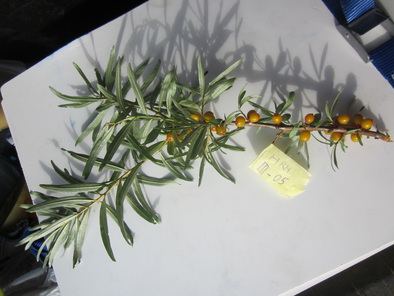Hippophae (sea-buckthorn) Collection & Documentation
Hippophae (sea-buckthorn) is a multipurpose plant intensively used in Himalaya, Tibet, and Loess Plateau regions by humans. Although genetic diversity and structure of this plant has been studied in Europe, India and Eastern China, this information is still lacking from Mongolia and Western China. Knowledge of genetic diversity and structure is a useful proxy to ecological health and evolutionary potential of natural populations. This information can help development of expert recommendations on protection and conservation of local populations of Hippophae.
GPS locations from anyone who comes across Hippophae will be extremely useful as it takes a lot of time to find new populations of Hippophae. The principle investigator especially wants to know about populations in Southwest Mongolia because there are only two populations known for Mongolia, but there are likely hundreds. Anyone who is at 300 to 4,000 meters may find them. Hippophae could be in glaciers, but they are mostly a high bush species.
Hippophae is an indicator of climate change, a pioneer species, and an ecological engineer species. The plant lives in symbiosis with another plant. Highly undisturbed habitats are best for this plant because moderate change in temperature will dramatically affect it.
How will this data be used?
Data from GPS locations and DNA extraction of shoots will be used in the publication of articles in scientific journals. It’s useful for understanding how climate changes influence biodiversity and ecology of our environment.
|
How Can You Participate?
Volunteers can contribute most by providing GPS locations and photos of Hippophae, and if time allows, collect samples. Samples should be pressed in a field leaf-press and be dried as soon as possible.
|

